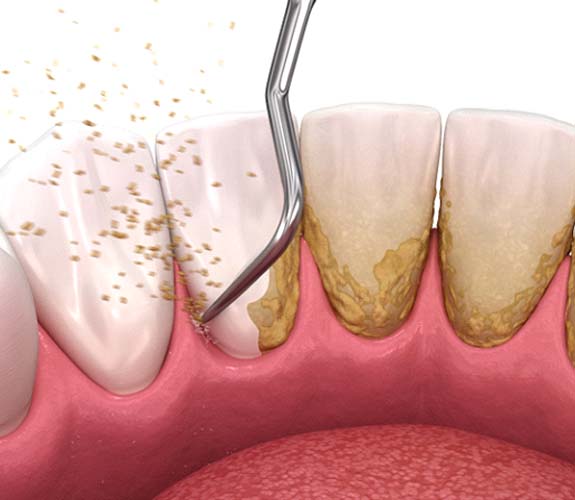
Scaling and Root Planing – Channahon, IL
Giving Your Gums a Thorough Cleaning
Gum disease is an extremely common condition that affects nearly half of all adults in the United States. During the early stages – also known as gingivitis – the symptoms of gum disease are mild, and it may be possible to reverse them with improved oral hygiene habits and regular dental cleanings. But when gum disease is not treated in time, it can eventually turn into periodontitis, which requires more complex care. Our in-house periodontist can prevent your gum disease from growing any worse with scaling and root planing, which are collectively known as a deep cleaning. Call us if you notice any bleeding or swelling that could be signs of a gum infection.
Why Choose Grand Dental – Channahon for Scaling and Root Planing?
- In-House Board-Certified Periodontist
- Care Tailored to Your Specific Needs
- Convenient Appointment Times
How Do I Know If I Need Scaling and Root Planing?

To confirm that scaling and root planing are required, our periodontist will use X-rays and other forms of digital imaging to determine whether scaling and root planing are required. If gum disease has already reached the periodontitis stage, scaling and root planing may be necessary. Common symptoms that could potentially indicate a need for scaling and root planing include:
- Gum Recession: The gums pull back from the teeth, causing them to look larger than normal.
- Bad Breath: The oral bacteria that cause gum disease can emit a foul-smelling compound, leading to chronic bad breath.
- Inflammation and Bleeding: Gum disease can lead to swollen gum tissue, and bleeding may occur while brushing or flossing.
How Does the Procedure Work?

The deep cleaning process begins with scaling, which involves the removal of plaque and tartar that has accumulated around the teeth and in the pockets of the gums. Once harmful bacteria have been removed, root planing can be performed. This involves smoothing out the roots of the teeth, which creates a surface that bacteria cannot adhere to as easily. Root planing also has the benefit of helping the gum tissue heal properly so that it can be reattached to the teeth.
Scaling and root planing can be completed in as little as one or two appointments, but more severe cases of gum disease may require multiple treatments. The mouth may be numbed with local anesthesia, and sedation can be administered to patients who are nervous or unable to sit still for long periods of time.
Benefits of Scaling and Root Planing

- Scaling and root planing can prevent further damage to the gum and bone tissue, saving the teeth from eventual loss.
- The process of scaling and root planing is very conservative and makes it possible to address gum disease long before it does any permanent damage.
- Once the gums heal, the patient will be able to eat with less irritation.
- Treating gum disease can improve overall health. Studies have found that gum disease is linked to heart problems, diabetes, and other systemic health issues. Treating gum disease does not completely eliminate the risk of experiencing these issues, but it does significantly reduce the risk.